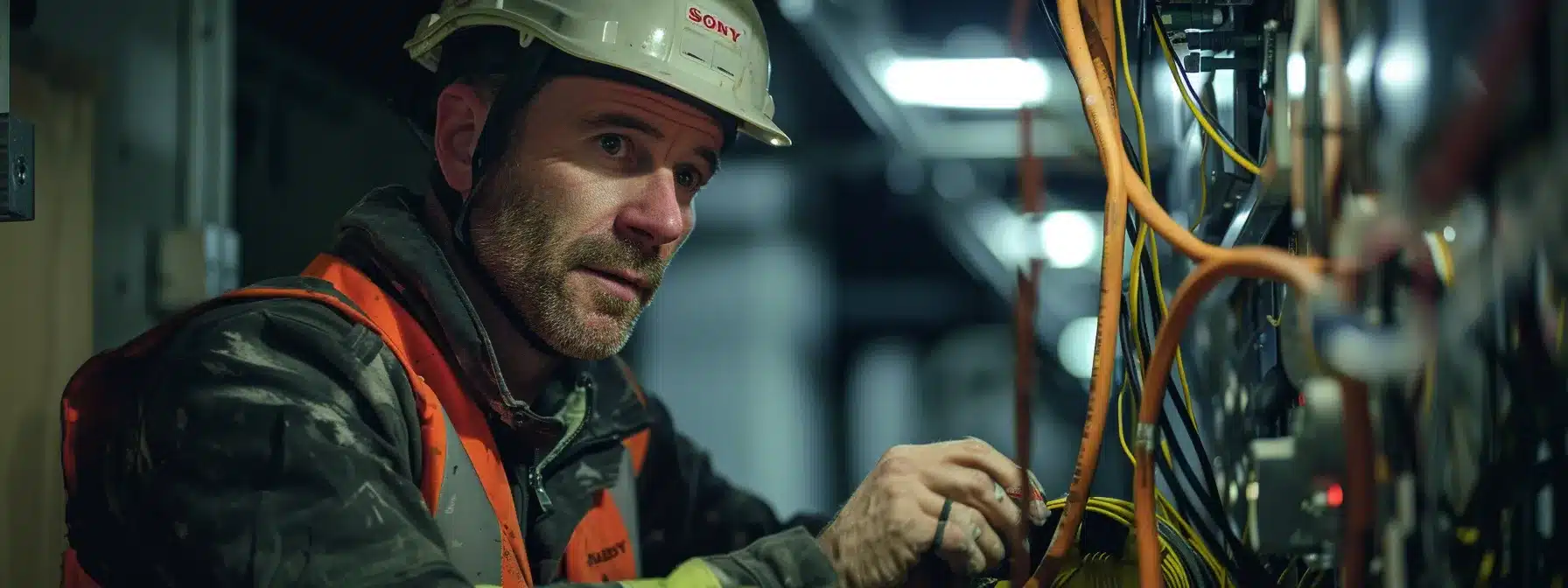Electrical emergencies can strike at any moment, leaving homeowners feeling helpless and unsure of what to do next. This Emergency Electrician Safety Guide serves as a crucial checklist for handling unexpected power issues safely and effectively. From identifying common electrical emergencies to knowing when to call an emergency electrician, this handbook covers essential analytics and safety measures for dealing with faulty power cords and other electrical hazards. In this article, we’ll explore the steps you need to take to protect your home and family during electrical emergencies, as well as provide tips for creating a safer electrical environment overall.
Key Takeaways
- Recognizing signs of electrical emergencies is crucial for maintaining safety in homes and businesses
- Installing GFCIs, testing smoke detectors, and properly placing fire extinguishers enhance home electrical safety
- Know when to call emergency electricians to prevent dangerous situations from escalating
- Use proper tools, including voltage testers and insulated equipment, when performing electrical work
- Secure the work area and communicate clearly about ongoing repairs to ensure everyone’s safety
Identifying Common Electrical Emergencies
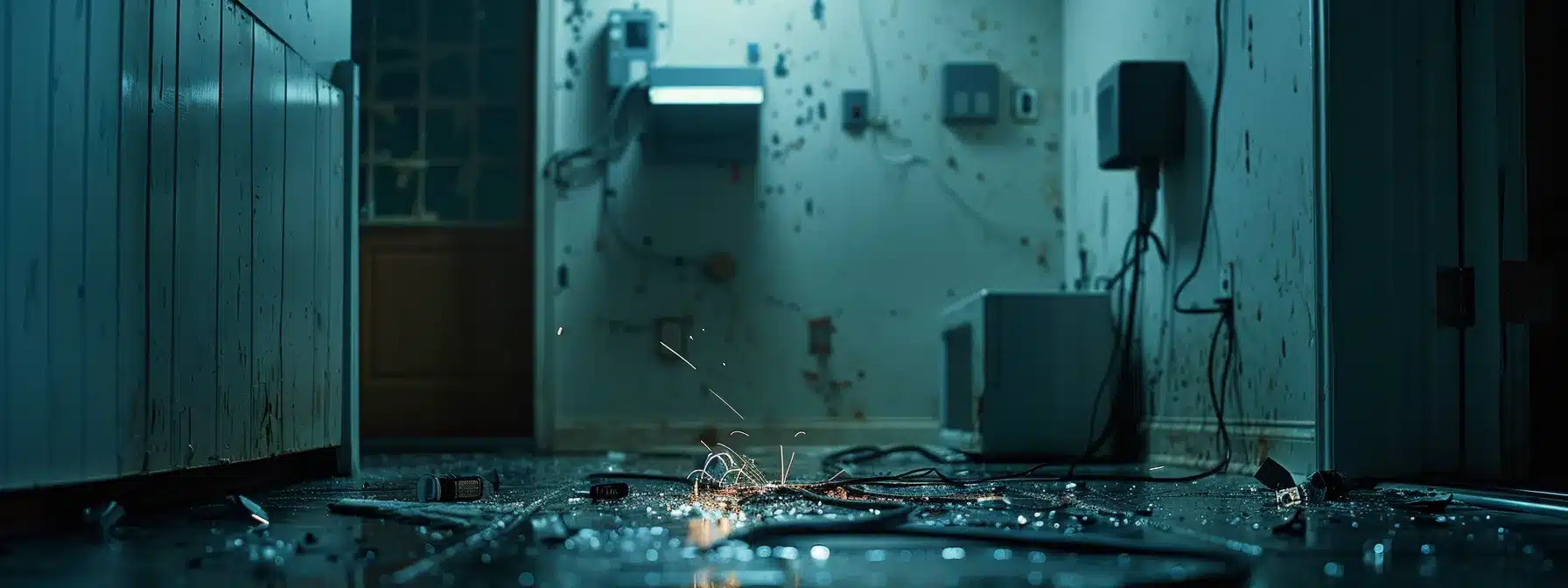
Electrical emergencies can strike at any time, potentially endangering lives and property. Homeowners and businesses in Lexington, KY need to be alert to signs of trouble in their electrical systems. From overloaded circuits to faulty wiring and sparking outlets, these issues can quickly escalate if not addressed promptly. Recognizing the telltale signs of electrical problems, such as frayed cords, hot wires, or frequent short circuits, is crucial for maintaining a safe environment. This guide will help you identify common electrical emergencies and understand when it’s time to call in the professionals at Doctor Electric.
Recognizing Signs of Overloaded Circuits
Overloaded circuits pose a significant electrical emergency risk in homes and businesses. Signs include frequently tripping circuit breakers, dimming lights when appliances turn on, and warm or discolored wall plates. These symptoms indicate that the electrical conductor is carrying more current than it can safely handle.
Homeowners should be wary of buzzing sounds from outlets or switches, as this can signal an overload. Another red flag is the smell of burning plastic or metal near electrical fixtures. Regular inspection of electrical panels and outlets can help catch these issues early.
To prevent overloads, avoid plugging too many high-wattage appliances into a single circuit. If problems persist, it’s time to call a professional electrician for a thorough assessment. Here’s a quick reference guide for recognizing overloaded circuits:
Spotting Faulty Wiring or Equipment
Faulty wiring or equipment poses serious fire safety risks in homes and businesses. Telltale signs include frequent circuit breaker trips, buzzing sounds from outlets, and visible wear on electrical cords. Homeowners should pay close attention to any unusual smells, like burning plastic, coming from electrical devices or outlets.
Electrical wiring problems often manifest as flickering lights, warm switch plates, or shocks when touching appliances. Discolored or scorched outlets indicate potential overheating issues that require immediate professional attention. Stay safe by avoiding the use of any device with frayed or exposed wires.
Regular inspection of electrical panels can reveal loose connections or corrosion, signaling potential hazards. If circuit breakers consistently trip or fuses blow frequently, it may indicate an underlying wiring problem. In such cases, calling a licensed electrician ensures proper diagnosis and repair, maintaining the safety of your property.
Understanding the Urgency of Sparking Outlets
Sparking outlets demand immediate attention and signal a pressing need for emergency electrical services. These dangerous occurrences often indicate underlying issues that can lead to fires or electrical shocks. Homeowners and businesses in Lexington, KY should treat sparking outlets as urgent safety concerns, requiring swift action to prevent potential disasters.
A comprehensive workplace safety program includes educating employees about the risks associated with faulty electrical outlets. Unusual noises, such as crackling or buzzing from outlets, often accompany visual sparks and should never be ignored. Prompt reporting of these issues to management or maintenance staff is crucial for maintaining a safe environment.
Electrical knowledge plays a vital role in recognizing the severity of sparking outlets. While minor sparks when plugging in high-draw appliances might be normal, persistent or large sparks indicate serious problems. In such cases, it’s essential to stop using the outlet immediately and contact a professional electrician. Here’s a quick guide to understanding outlet sparks:
Electrical emergencies can strike at any moment, threatening safety and property. Learn the crucial steps to take when faced with these urgent situations.
Immediate Actions for Electrical Emergencies
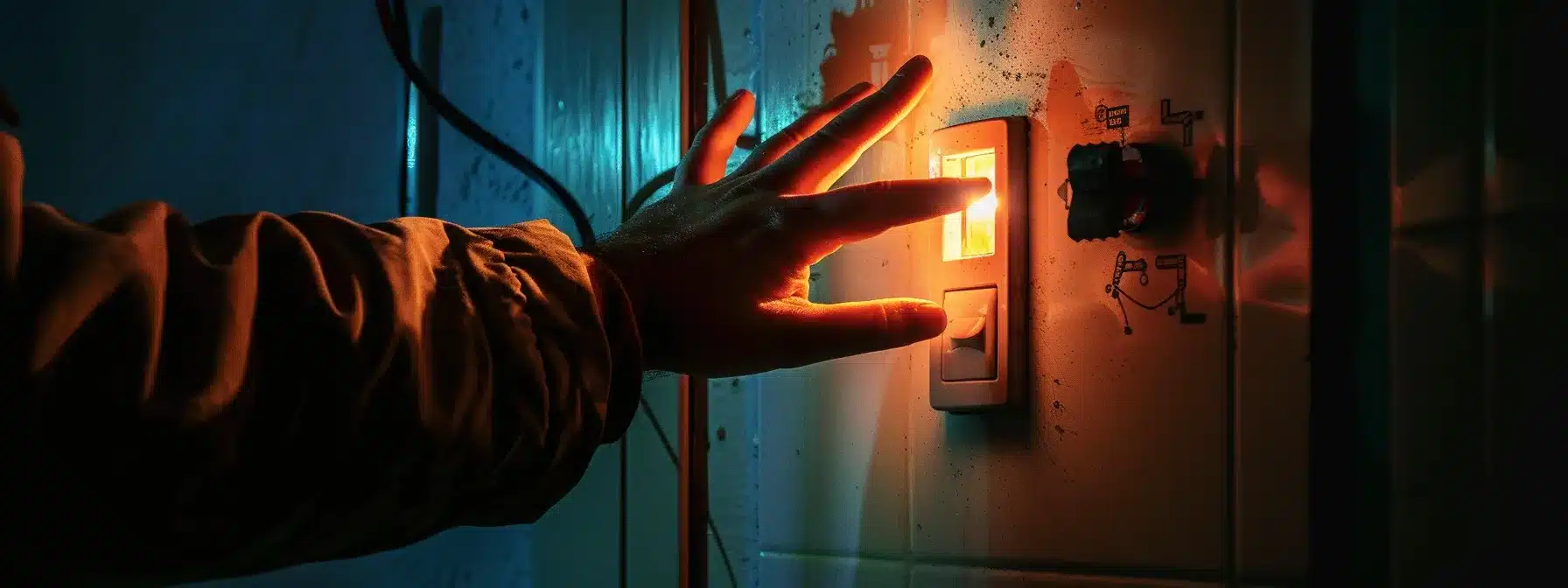
When electrical emergencies strike, swift action can mean the difference between safety and disaster. Homeowners and businesses in Lexington, KY must be prepared to respond quickly to protect lives and property. This guide outlines crucial electrical safety tips for handling urgent situations, from shutting off power at the main breaker to using fire extinguishers on electrical fires. Understanding how to deal with electric arcs and when to evacuate safely is essential knowledge for everyone. While these steps can mitigate immediate dangers, it’s important to remember that a professional electrical contractor should always be called to address the root cause of electrical emergencies and ensure long-term safety.
Shutting Off Power at the Main Breaker
In electrical emergencies, shutting off power at the main breaker is a critical first step. Homeowners should familiarize themselves with the location of their main electrical panel and practice safe access, avoiding the use of metal ladders near electrical sources. This knowledge forms the foundation of basic troubleshooting and safety measures.
When facing an electrical emergency, individuals should approach the main breaker with caution. Experts recommend wearing rubber-soled shoes and using a wooden handle tool to flip the switch if possible. Some smart home programs now allow for remote power shutoff, but these should only be used with proper user consent and understanding.
After cutting power at the main breaker, it’s crucial to verify that electricity is indeed off throughout the property. However, this step should not replace calling a professional electrician. An expert can safely diagnose the issue and restore power once the emergency has been addressed.
Using Fire Extinguishers on Electrical Fires
When facing electrical fires, using the right type of fire extinguisher is crucial. For electrical problems, a Class C fire extinguisher is the safest choice. These extinguishers contain non-conductive agents that won’t spread the fire through the electrical network.
Construction sites and homes should keep Class C extinguishers readily available near potential electrical hazards. When using an extinguisher on an electrical fire, aim at the base of the flames and sweep from side to side. Remember to maintain a safe distance to avoid electric shock.
One of the most important tips for electrical fire safety is to unplug or disconnect the power source if possible. This might mean unplugging an extension cord or shutting off the main breaker. However, never attempt to extinguish an electrical fire if you’re unsure about your safety or the fire’s size.
Evacuating Safely and Call for Help
When evacuating due to an electrical emergency, prioritize safety over salvaging belongings. Leave the area immediately if you smell a burning odor or see smoke, even if you’ve used a fire extinguisher. Don’t waste time unplugging home appliances or gathering personal items.
Once outside, call emergency services right away. Provide clear details about the situation, including any visible electrical cables or sparking equipment. If safe to do so, alert neighbors who might be affected by the emergency.
After evacuation, don’t re-enter the building until professionals have declared it safe. This precaution applies even if you think the issue was minor, like a malfunctioning GDPR cookie consent pop-up on your computer. Electrical problems can be deceptive and require expert assessment.
While knowing how to handle electrical emergencies is crucial, prevention is always better than cure. Let’s explore how you can prepare your home to avoid these dangerous situations altogether.
Preparing Your Home for Electrical Safety
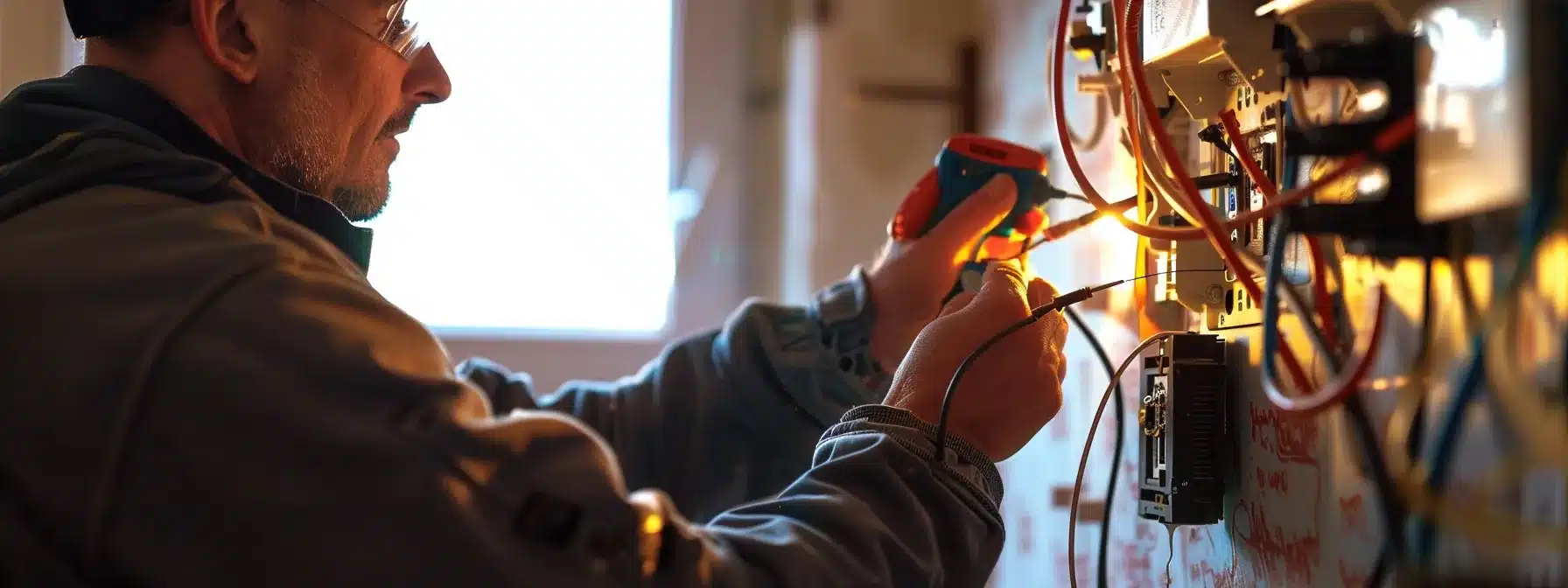
Electrical safety in the home is paramount for preventing accidents, fires, and carbon monoxide poisoning. Homeowners in Lexington, KY can take proactive steps to safeguard their properties by following essential safety tips recommended by the National Fire Protection Association. This section covers crucial aspects of home electrical safety, including the installation of Ground Fault Circuit Interrupters (GFCIs), regular testing of smoke detectors, and proper placement of fire extinguishers. By implementing these measures, residents can create a safer living environment and reduce the risk of electrical emergencies. Understanding these safety practices is as important as knowing manufacturing processes in the electrical industry, ensuring homes are protected against potential hazards.
Installing Ground Fault Circuit Interrupters (GFCI)
Installing Ground Fault Circuit Interrupters (GFCIs) is a crucial step in enhancing residential electrical safety. These devices protect against electric shock by quickly shutting off power when they detect ground faults. Homeowners should prioritize GFCI installation in areas prone to moisture, such as kitchens, bathrooms, and outdoor spaces.
Proper GFCI installation requires knowledge of electric power systems and adherence to local regulations. While some handy homeowners might attempt DIY installation, it’s often safer to hire a professional electrician. They’ll ensure the GFCI replaces the existing outlet or fuse correctly, maintaining the integrity of your home’s electrical system.
When working with GFCIs, always use appropriate personal protective equipment to prevent accidents. Regular testing of installed GFCIs is essential to ensure they’re functioning correctly. Here’s a quick guide to GFCI installation and maintenance:
Regularly Testing Smoke Detectors
Regular testing of smoke detectors forms a crucial part of home electrical safety, protecting residents from both fire and carbon monoxide hazards. These devices serve as the first line of defense, alerting occupants to potential dangers before they escalate. Homeowners should test their smoke detectors monthly, ensuring they function correctly and provide adequate protection for all areas of the house.
When testing smoke detectors, it’s important to check both the alarm sound and the device’s sensitivity to smoke. Some modern detectors incorporate flame retardant materials in their construction, enhancing their durability and effectiveness. For homes with smart electronics, interconnected smoke detectors offer additional safety benefits, alerting all units when one detects a problem.
In addition to smoke detection, many modern units also sense carbon monoxide, a deadly odorless gas. Homeowners should familiarize themselves with their detectors’ features and include carbon monoxide testing in their regular maintenance routine. It’s also wise to keep a first aid kit nearby in case of emergencies, ensuring quick response to any situation that may arise.
Keeping Fire Extinguishers Accessible
Keeping fire extinguishers accessible is crucial for swift response during electrical emergencies. Homeowners should place extinguishers near potential fire hazards, such as the electrical panel, kitchen appliances, and home office areas. This strategic placement ensures quick action in case of a power outage or electrical fire.
When selecting locations for fire extinguishers, consider ease of access and visibility. Avoid storing them behind furniture or in hard-to-reach places that might delay response time during an emergency. Regular checks ensure extinguishers remain in good condition and ready for use if an accident occurs during electrical repairs.
Proper usage of fire extinguishers can prevent minor electrical issues from escalating into major disasters. Homeowners should familiarize themselves with the operation of their extinguishers and teach family members how to use them safely. This knowledge can help prevent severe burns and property damage in case of an electrical fire. Here are key steps for maintaining accessible fire extinguishers:
- Place extinguishers in visible, easy-to-reach locations
- Keep extinguishers away from heat sources
- Check pressure gauges monthly
- Schedule professional inspections annually
- Replace extinguishers that show signs of damage or corrosion
Sudden electrical issues can disrupt your life and pose serious risks. Learn when to call in the professionals for immediate help.
When to Call an Emergency Electrician

Knowing when to call emergency electricians can mean the difference between a minor inconvenience and a life-threatening situation. While basic troubleshooting skills are valuable, certain electrical issues demand professional expertise. From malfunctioning large appliances to signs of dangerous wiring problems, homeowners must recognize situations that go beyond their capabilities. Understanding these scenarios helps prevent potential injuries and ensures proper safety gear is used. In emergencies, it’s crucial to remember that attempting DIY fixes on complex electrical systems can lead to severe accidents, possibly requiring cardiopulmonary resuscitation. This guide will help you identify when it’s time to step back, ensure everyone’s safety, and call in the experts who can properly address issues with your home’s electrical ground and wiring.
Identifying Situations Beyond Basic Troubleshooting
Recognizing situations beyond basic troubleshooting is crucial for preventing electrical injury and maintaining home electrical safety. While homeowners can handle minor issues, certain problems require professional intervention. A surge protector failing to prevent power fluctuations during a storm signals a need for expert assessment.
Electrician safety tips emphasize caution when dealing with persistent electrical problems. Frequent circuit breaker trips, unexplained burning smells, or visible sparks from outlets indicate serious issues that demand immediate professional attention. These symptoms often point to underlying wiring problems that can pose significant fire hazards if left unaddressed.
Home electrical systems can develop complex issues over time, especially in older properties. Signs like flickering lights that don’t respond to bulb changes, buzzing sounds from switches, or warm outlets suggest potential wiring degradation. In these cases, calling an emergency electrician ensures proper diagnosis and repair, safeguarding your home and family from electrical dangers.
Evaluating Electrical Issues With Large Appliances
Large appliances often draw significant power, making them potential sources of electrical issues. When these devices malfunction, they can strain the home’s electrical system, leading to voltage fluctuations or overloads. Homeowners should monitor their appliances for signs of trouble, such as unusual noises, burning smells, or frequent tripping of circuit breakers.
Attempting to repair large appliances without proper knowledge can result in personal injury or further damage to the equipment. If a major appliance shows signs of electrical problems, it’s crucial to disconnect it safely and avoid use until a professional can assess the situation. Emergency service from a qualified electrician ensures proper diagnosis and repair of complex appliance issues.
Sometimes, problems with large appliances indicate broader issues within a home’s electrical system. An experienced electrician can determine whether the issue lies with the appliance itself or points to more extensive wiring problems. Prompt evaluation by a professional helps prevent potential fire hazards and ensures the safety of household members. Here are key signs that warrant calling an emergency electrician for appliance issues:
- Visible sparks or smoke from the appliance
- Burning odors when the appliance is in use
- Frequent power outages when using the appliance
- Shocks or tingling sensations when touching the appliance
- Appliance performance issues accompanied by electrical symptoms
Knowing the Signs of Dangerous Wiring Problems
Recognizing dangerous wiring problems is crucial for maintaining a safe power supply in homes and businesses. Frayed or exposed wires, discolored outlets, and frequent circuit breaker trips indicate potential hazards that require immediate attention. Homeowners should stay alert for unusual odors, such as burning plastic, which often signal overheating electrical components.
Flickering lights or appliances that intermittently lose power may point to unstable current flow within the electrical system. These issues can escalate quickly, posing fire risks and necessitating emergency services. An experienced electrician can diagnose and repair these problems, ensuring the safety of occupants and property.
Buzzing sounds from switches or outlets, warm switch plates, and shocks when touching appliances are clear signs of electrical system malfunctions. These symptoms demand prompt action to prevent potential fires or electrocution. Calling an emergency electrician at the first sign of these issues can prevent dangerous situations from developing. Here are key indicators that warrant immediate professional attention:
- Persistent burning smells near electrical fixtures
- Visible sparks from outlets or switches
- Discolored or scorched wall plates
- Frequent blowing of fuses or tripping of circuit breakers
- Tingling sensations when touching metal appliances or water fixtures
Knowing when to call an emergency electrician is crucial, but what about those times when you can tackle minor electrical tasks yourself? Let’s explore the essential tools you’ll need to perform safe electrical work around your home or business.
Essential Tools for Safe Electrical Work
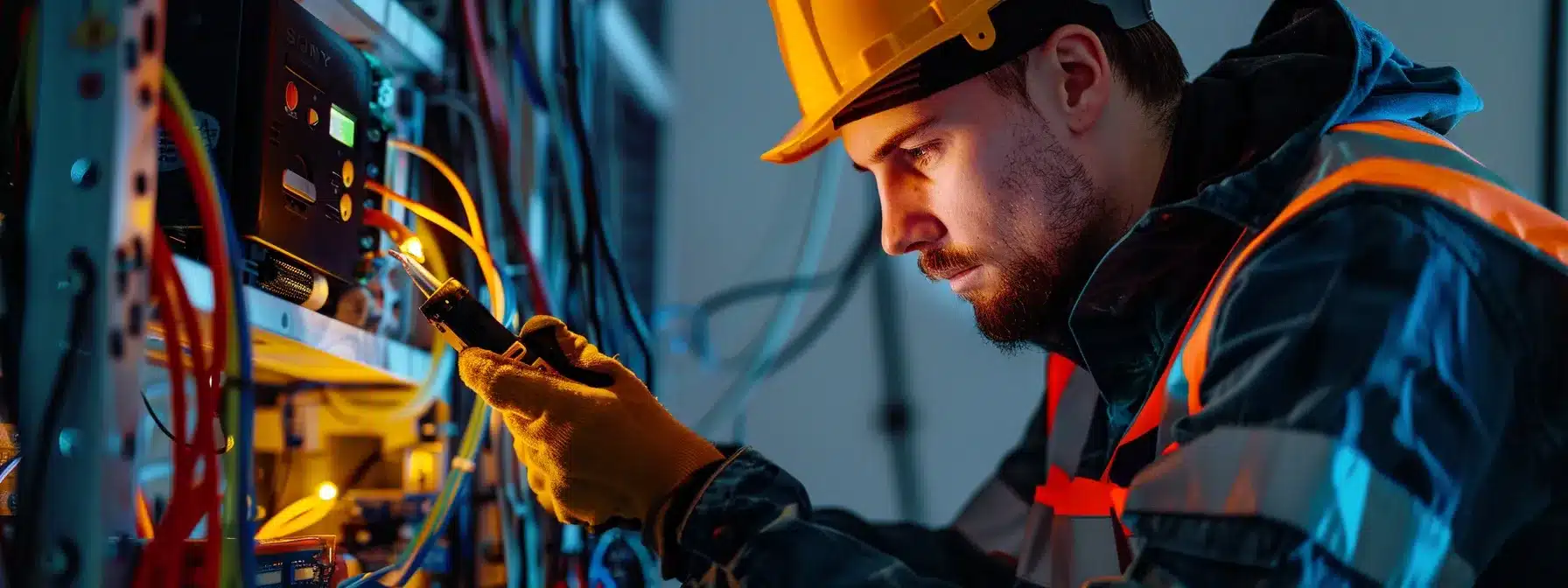
Performing electrical work safely requires a solid understanding of essential tools and equipment. From voltage testers that detect live currents to insulated tools that protect against shocks, these items form the foundation of occupational safety and health in electrical work. Personal protective equipment (PPE) plays a crucial role in safeguarding against arc flash incidents and other hazards. By learning about and properly using these tools, electricians and homeowners alike can adhere to Occupational Safety and Health Administration (OSHA) guidelines, ensuring their safety while tackling electrical tasks. This section explores the key tools and practices that contribute to safe electrical work, empowering individuals to approach repairs and maintenance with confidence and caution.
Understanding the Use of Voltage Testers
Voltage testers serve as essential tools for identifying electrical issues and mitigating risk during repairs. These devices detect the presence of electrical energy in wires, outlets, and other components, allowing technicians to work safely. Proper electrical safety training emphasizes the importance of using voltage testers before beginning any electrical work.
Different types of voltage testers suit various electrical services and applications. Non-contact testers provide quick checks for live circuits, while multimeters offer more detailed voltage readings. Understanding how to interpret these readings helps technicians assess the safety of electrical systems and diagnose problems accurately.
Regular calibration and maintenance of voltage testers ensure their reliability in detecting electrical energy. Technicians should include tester checks in their pre-work routines to verify proper functioning. This practice enhances overall electrical safety and helps prevent accidents caused by faulty equipment or misreadings.
Selecting Insulated Tools for Electrical Work
Selecting the right insulated tools is crucial for safe electrical work. Properly insulated tools protect electricians from electric shock by providing a barrier against live currents. These specialized tools undergo rigorous testing to ensure they meet safety standards for working on energized circuits.
When choosing insulated tools, look for those rated for the maximum voltage you might encounter. The insulation should cover the entire working surface of the tool, leaving no exposed metal parts. Regular inspection of insulated tools helps identify any damage that could compromise their protective qualities.
Invest in a complete set of insulated tools, including screwdrivers, pliers, and wire strippers. Using these tools exclusively for electrical work helps maintain their integrity and ensures consistent protection. Remember, even with insulated tools, always follow proper safety procedures and wear appropriate personal protective equipment when working with electricity.
Wearing Personal Protective Equipment
Personal protective equipment (PPE) forms a critical defense against electrical hazards during emergency repairs. Electricians must wear proper PPE, including insulated gloves, safety glasses, and flame-resistant clothing, to shield themselves from potential shocks and arc flashes. This gear serves as the last line of defense when working with live electrical systems.
Proper fit and maintenance of PPE ensure its effectiveness in protecting against electrical injuries. Electricians should regularly inspect their gear for signs of wear or damage, replacing items as needed to maintain optimal safety. Training in the correct use and limitations of PPE helps workers understand when and how to apply these protective measures effectively.
In addition to standard PPE, emergency electricians often require specialized equipment for high-risk situations. This may include arc-rated face shields, insulating rubber mats, and voltage-rated tools designed for specific tasks. By adhering to strict PPE protocols, electricians significantly reduce their risk of injury while addressing urgent electrical issues in homes and businesses.
Safety precautions don’t end with the right tools. Let’s explore how to set up a secure workspace for tackling electrical repairs.
Creating a Safe Environment for Electrical Repairs
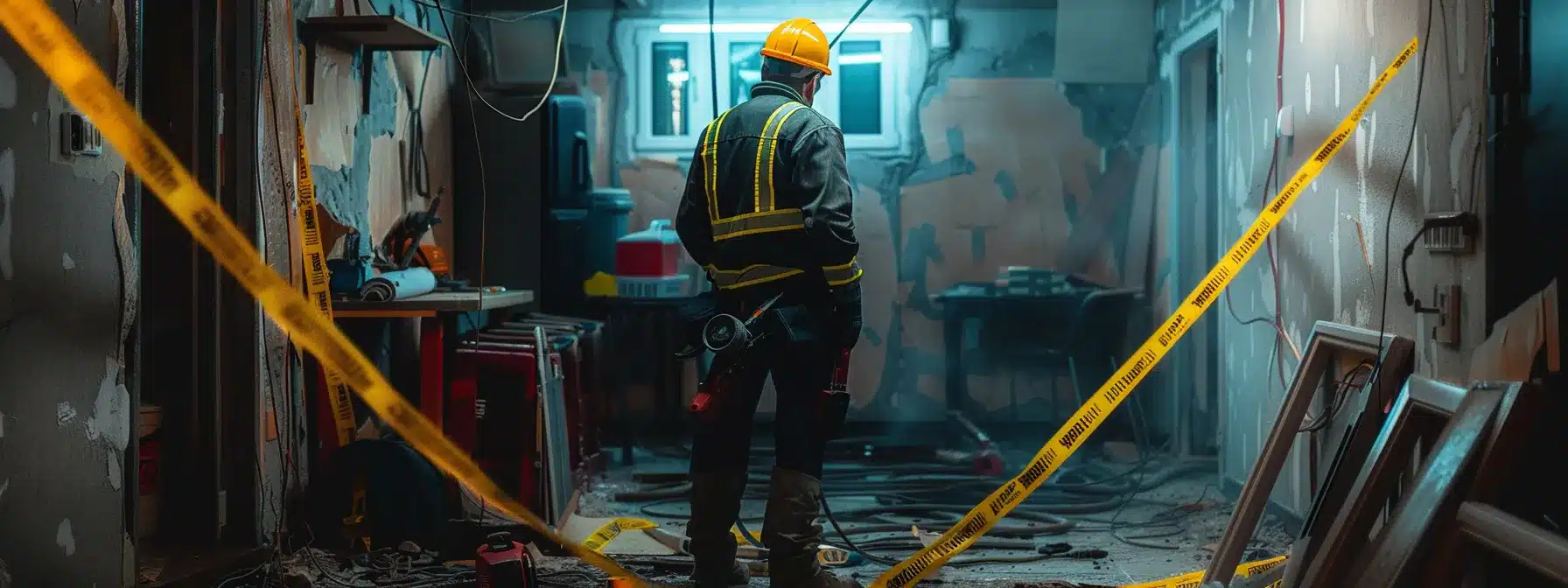
Creating a safe environment for electrical repairs is crucial for preventing accidents and ensuring the well-being of both professionals and bystanders. This process involves carefully securing the area around the repair site, communicating effectively with family members or coworkers about ongoing work, and meticulously verifying that power is completely off before commencing any repairs. By following these essential steps, electricians and homeowners can significantly reduce the risk of electrical injuries and property damage. Proper preparation not only enhances safety but also contributes to more efficient and effective repair work, allowing for a smoother resolution of electrical emergencies.
Securing the Area Around the Repair Site
Securing the area around an electrical repair site forms the foundation of a safe work environment. Electricians must establish a clear perimeter, using caution tape or barriers to prevent unauthorized access. This step protects both workers and bystanders from potential hazards during emergency repairs.
Proper lighting plays a crucial role in creating a secure repair zone. Technicians should set up adequate temporary lighting to ensure visibility, especially when working in dimly lit areas or during nighttime emergencies. Good illumination helps prevent accidents and allows for more precise work.
Removing potential trip hazards and clutter from the work area enhances safety for everyone involved. Electricians should clear away any unnecessary tools, materials, or debris that could impede movement or cause accidents. This clean workspace allows for quicker response times and reduced risk of injury during urgent electrical repairs.
Informing Family or Coworkers About Ongoing Work
Clear communication about ongoing electrical repairs ensures everyone’s safety. Inform family members or coworkers about the work area, potential hazards, and expected duration of repairs. This awareness helps prevent accidental interruptions or safety breaches during critical tasks.
Use simple language to explain the nature of the electrical work and any precautions others should take. Highlight areas to avoid and emphasize the importance of keeping children and pets away from the repair site. Provide updates on progress to maintain situational awareness throughout the repair process.
Designate a point of contact for questions or concerns during the repair work. This person can relay important information between the electrician and other occupants, ensuring smooth communication and minimizing disruptions. Establish a clear protocol for emergencies, including how to quickly alert the electrician if necessary:
- Identify the work area and set clear boundaries
- Explain potential hazards in simple terms
- Provide regular updates on repair progress
- Designate a point of contact for questions
- Establish an emergency communication protocol
Double-Checking Power Is Off Before Starting
Double-checking that power is off before starting any electrical repairs is a critical safety step. Electricians use voltage testers to verify the absence of electrical current in circuits and components. This crucial verification process helps prevent accidental shocks and ensures a safe working environment.
Proper lockout/tagout procedures complement the power verification process. Electricians should secure the main breaker or fuse box to prevent accidental power restoration during repairs. They should also place warning tags to alert others about the ongoing work and the importance of keeping the power off.
Even after confirming power is off, electricians should treat all wires and components as if they’re live. This cautious approach accounts for potential back-feeding or residual charge in capacitors. By maintaining this safety mindset throughout the repair process, electricians significantly reduce the risk of electrical accidents.
Conclusion
The “Emergency Electrician Safety Guide” serves as an essential resource for homeowners and businesses in Lexington, KY, providing crucial knowledge on identifying electrical emergencies and taking appropriate action. This comprehensive handbook empowers readers to recognize signs of overloaded circuits, faulty wiring, and dangerous electrical issues, while also outlining immediate steps to take during emergencies, such as shutting off power and using fire extinguishers correctly. By emphasizing the importance of proper tools, personal protective equipment, and creating a safe work environment, the guide ensures that both professionals and homeowners can approach electrical repairs with confidence and caution. Ultimately, this safety guide plays a vital role in preventing accidents, protecting lives, and maintaining the integrity of electrical systems in homes and businesses.

